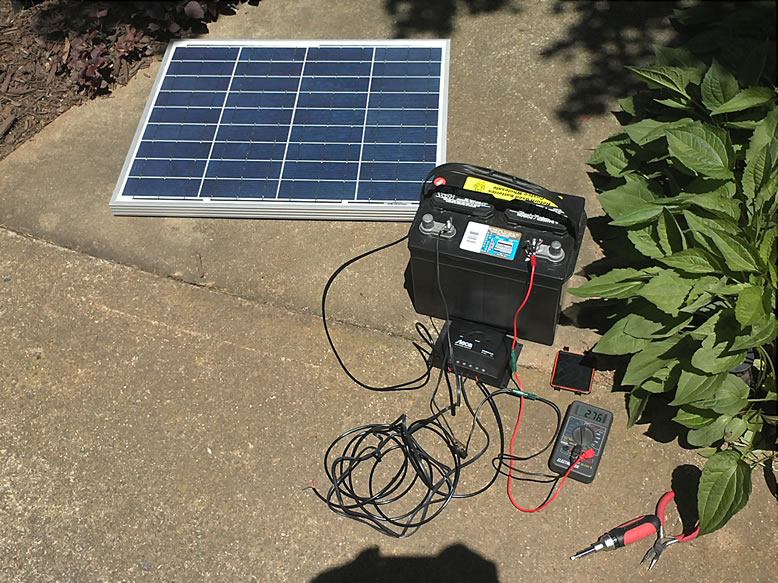I've got an onboard 12v deep cycle trolling motor battery that I need to charge at a dock that is away from grid power. My plan is to use a 40 watt panel, connected to a 6.6 amp Steca Solsum 12/24v charge controller.
The Steca has two sets of output terminals: 1 for a load (lighting, etc.), 1 for battery charging.
If I wanted to maintain a second 12v battery in the dock box for things like lights, radio, etc., would there be a disadvantage to rigging the in-box battery to the charge controller, and then charging the boat mounted battery from the box battery? Will there be battery equalization issues when the sun is not shining?
I could also run the charge leads from the Steca to an A/B battery switch, and selectively charge the boat or dock battery as needed, but it's just one more thing to keep track of.
Thanks for any input.
The Steca has two sets of output terminals: 1 for a load (lighting, etc.), 1 for battery charging.
If I wanted to maintain a second 12v battery in the dock box for things like lights, radio, etc., would there be a disadvantage to rigging the in-box battery to the charge controller, and then charging the boat mounted battery from the box battery? Will there be battery equalization issues when the sun is not shining?
I could also run the charge leads from the Steca to an A/B battery switch, and selectively charge the boat or dock battery as needed, but it's just one more thing to keep track of.
Thanks for any input.



 Not too mention are likely also being recharged by the boat motor with that 300 HP engine pushing their boat. Bet their sponsors can afford a battery isolator.
Not too mention are likely also being recharged by the boat motor with that 300 HP engine pushing their boat. Bet their sponsors can afford a battery isolator.

Comment